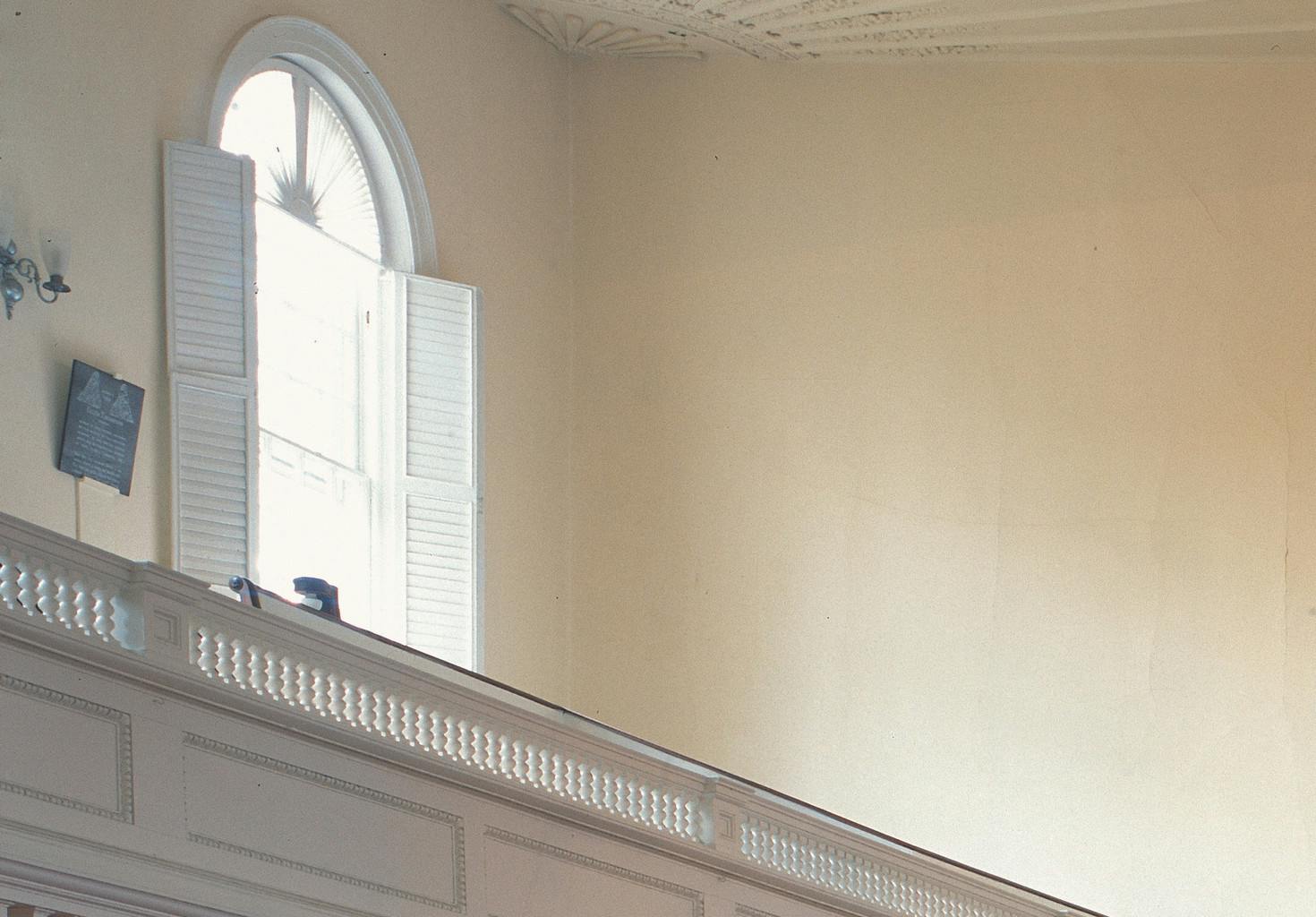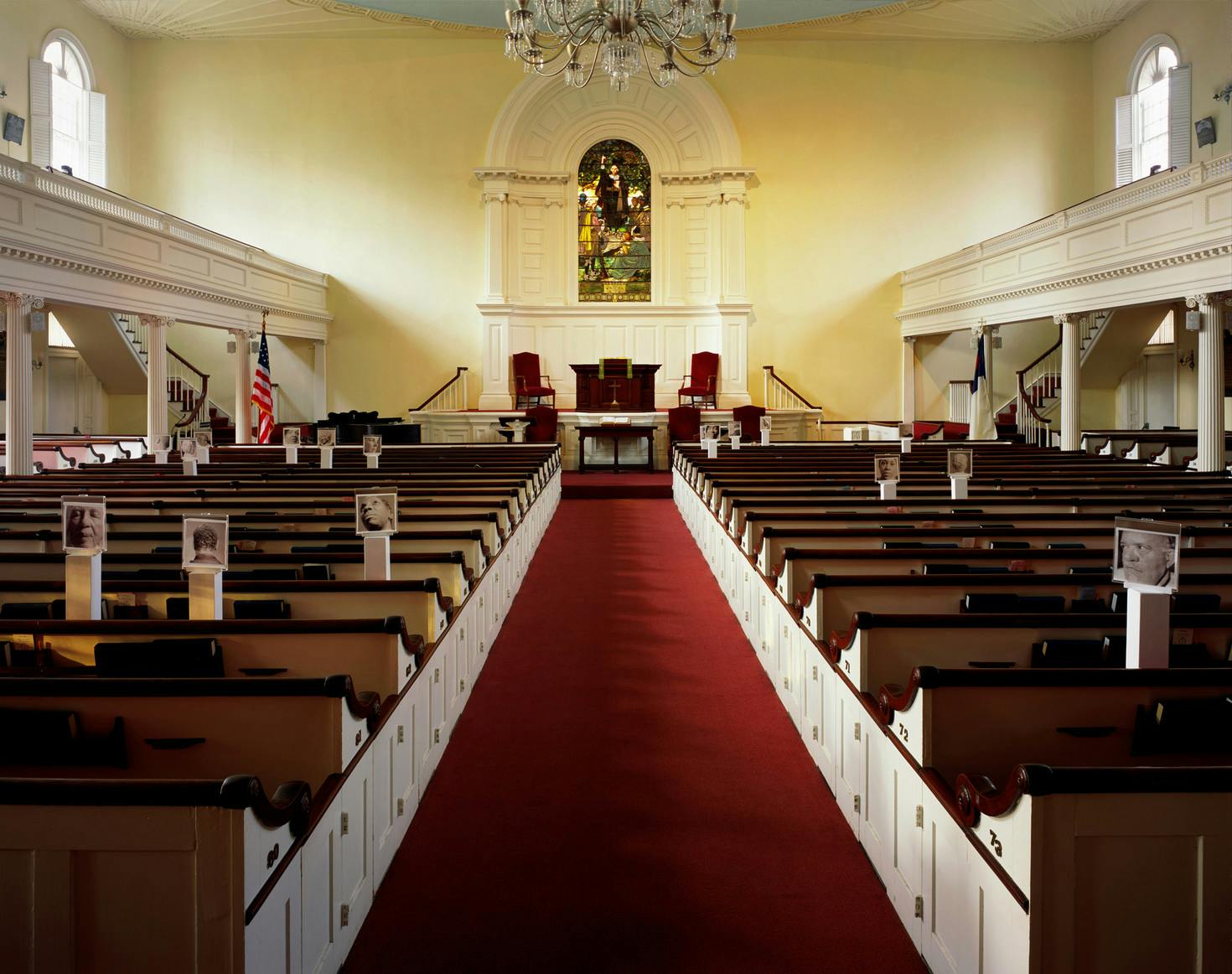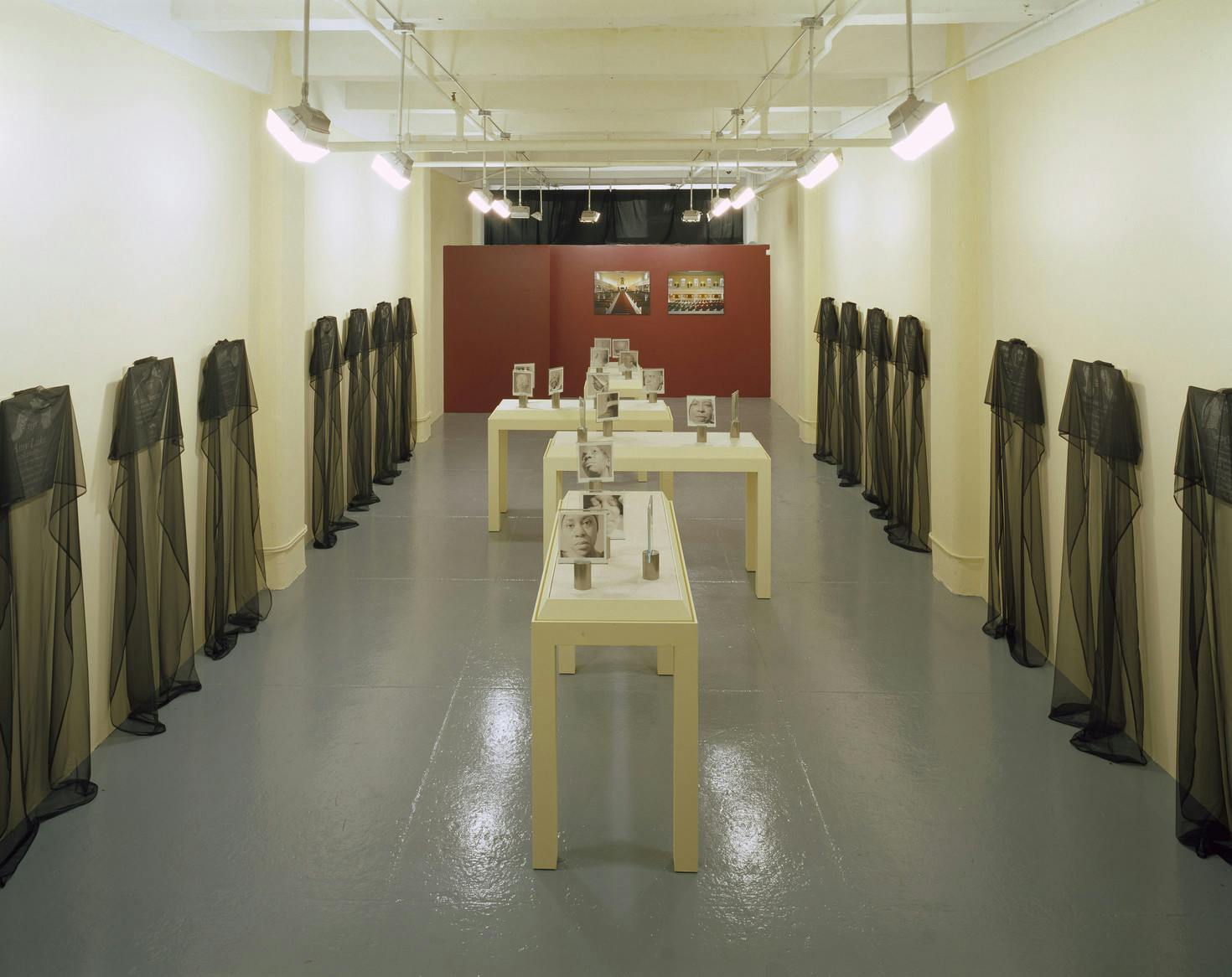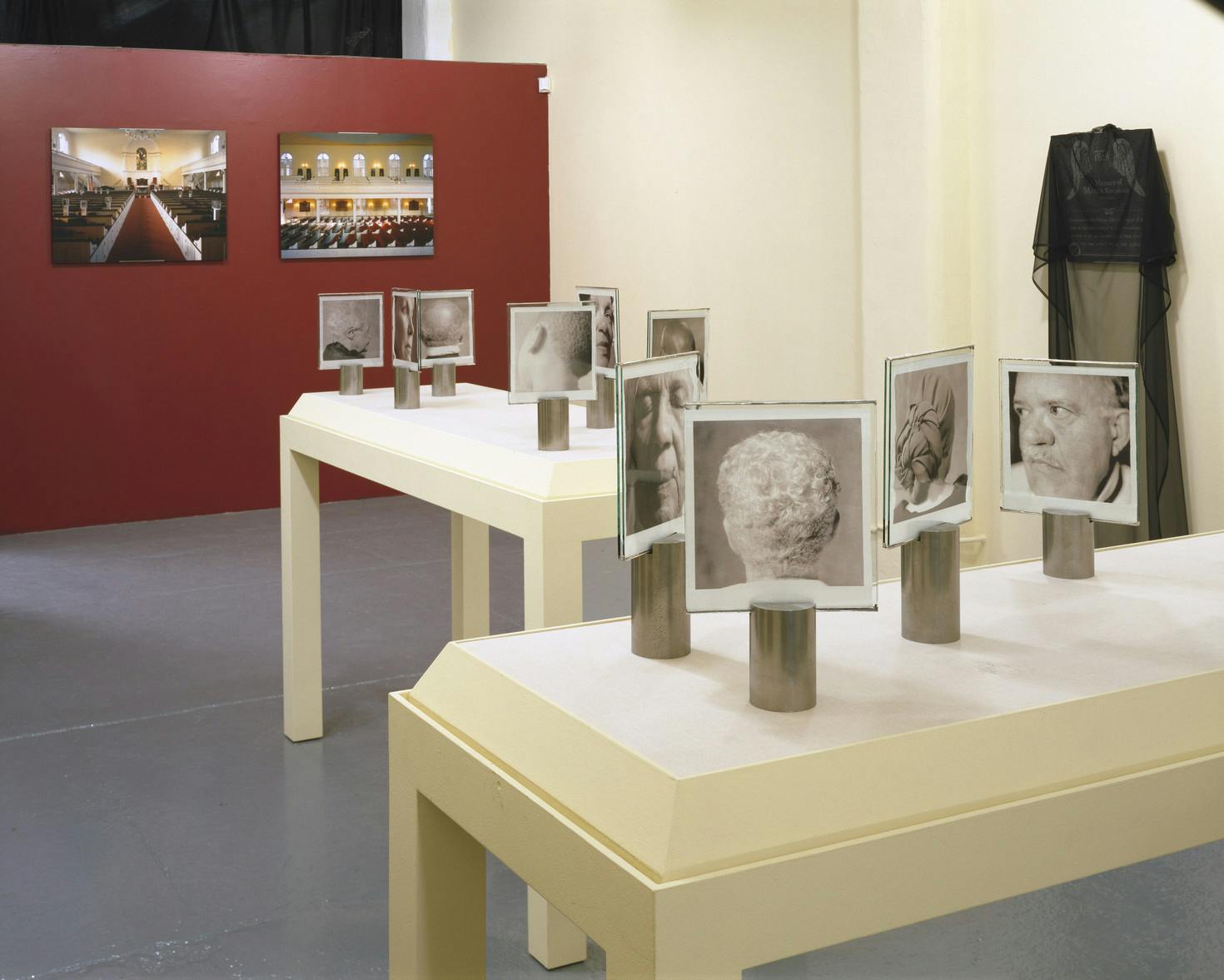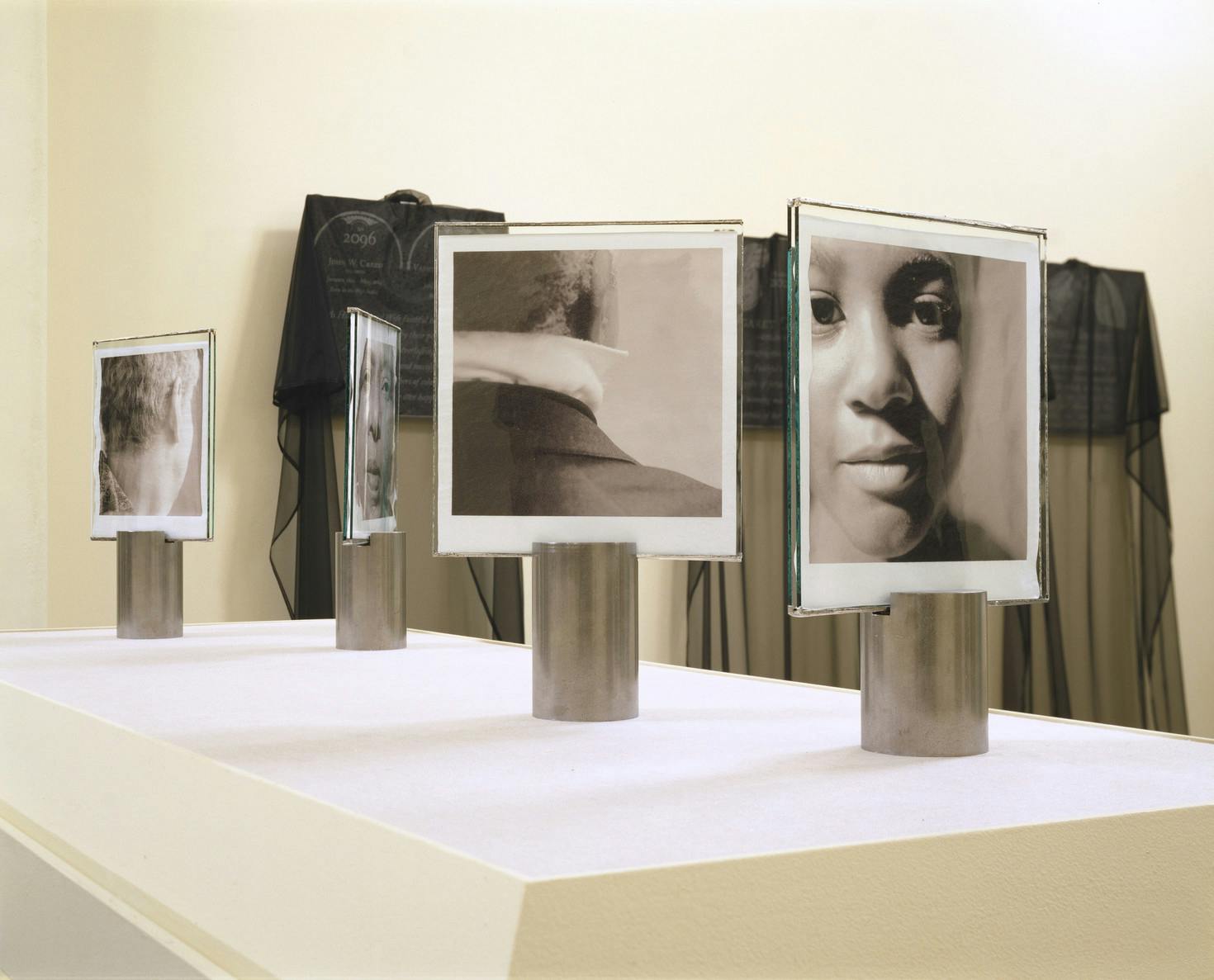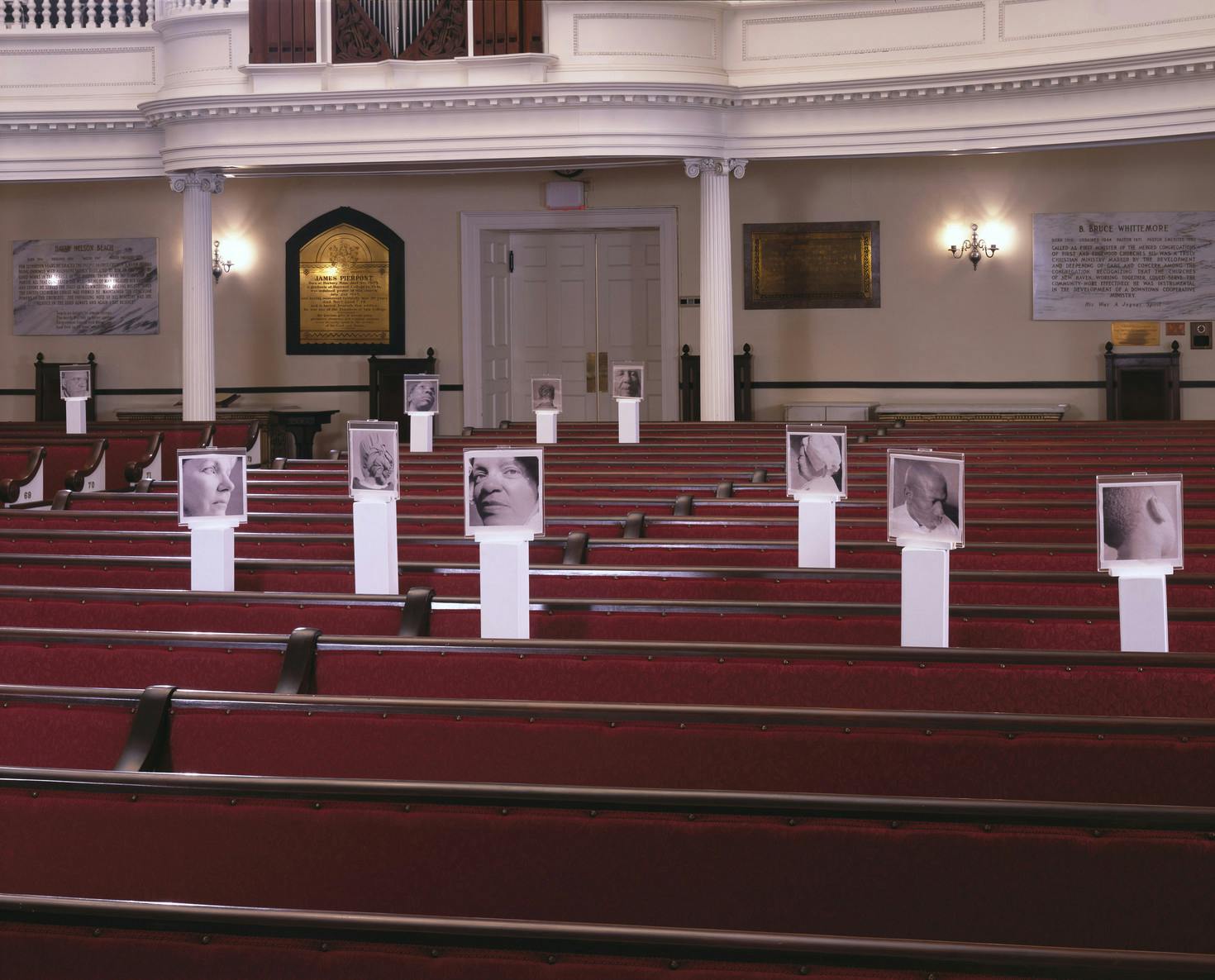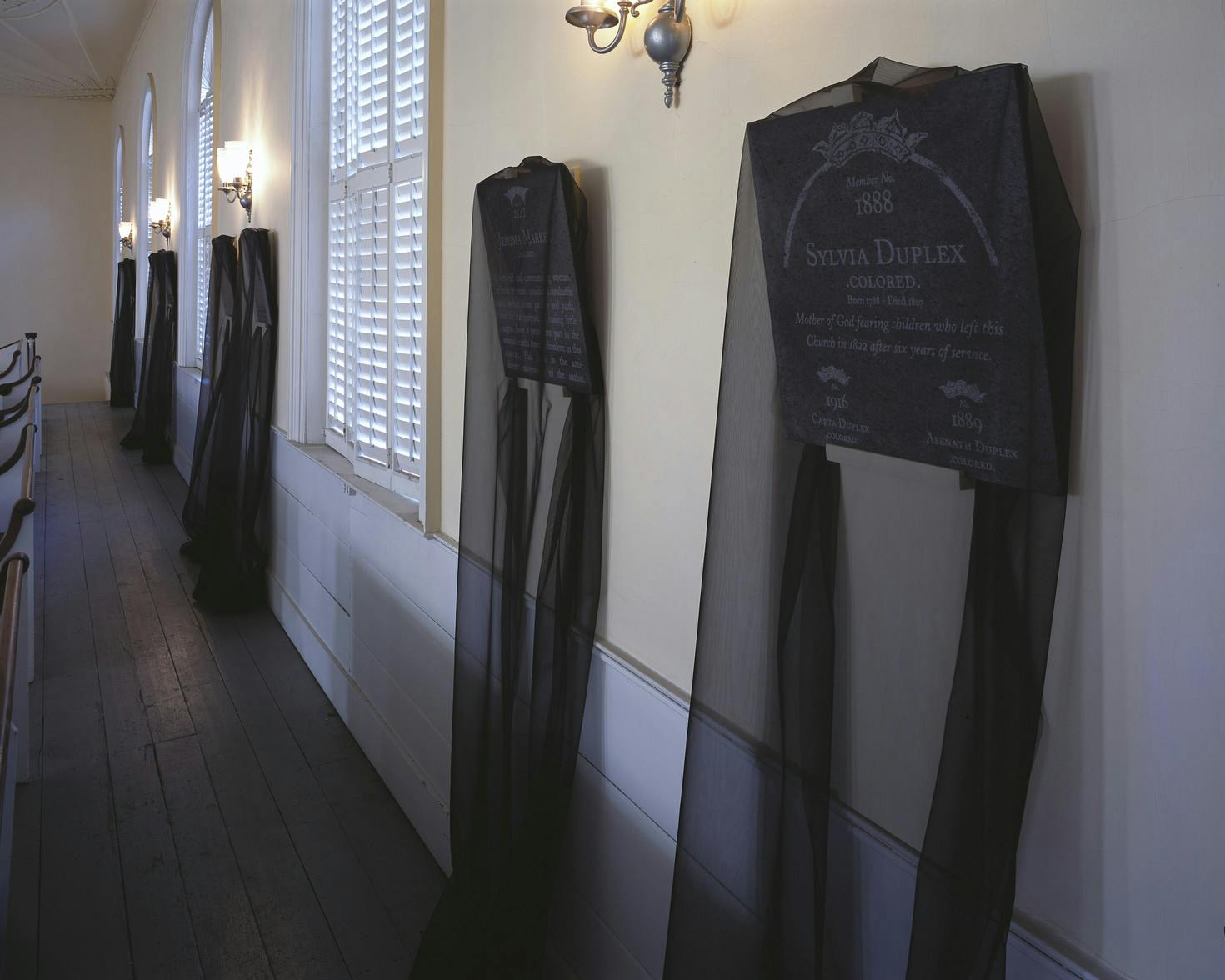Silence
Civic installation: engraved granite, photography, silk
2001
McCallum & Tarry
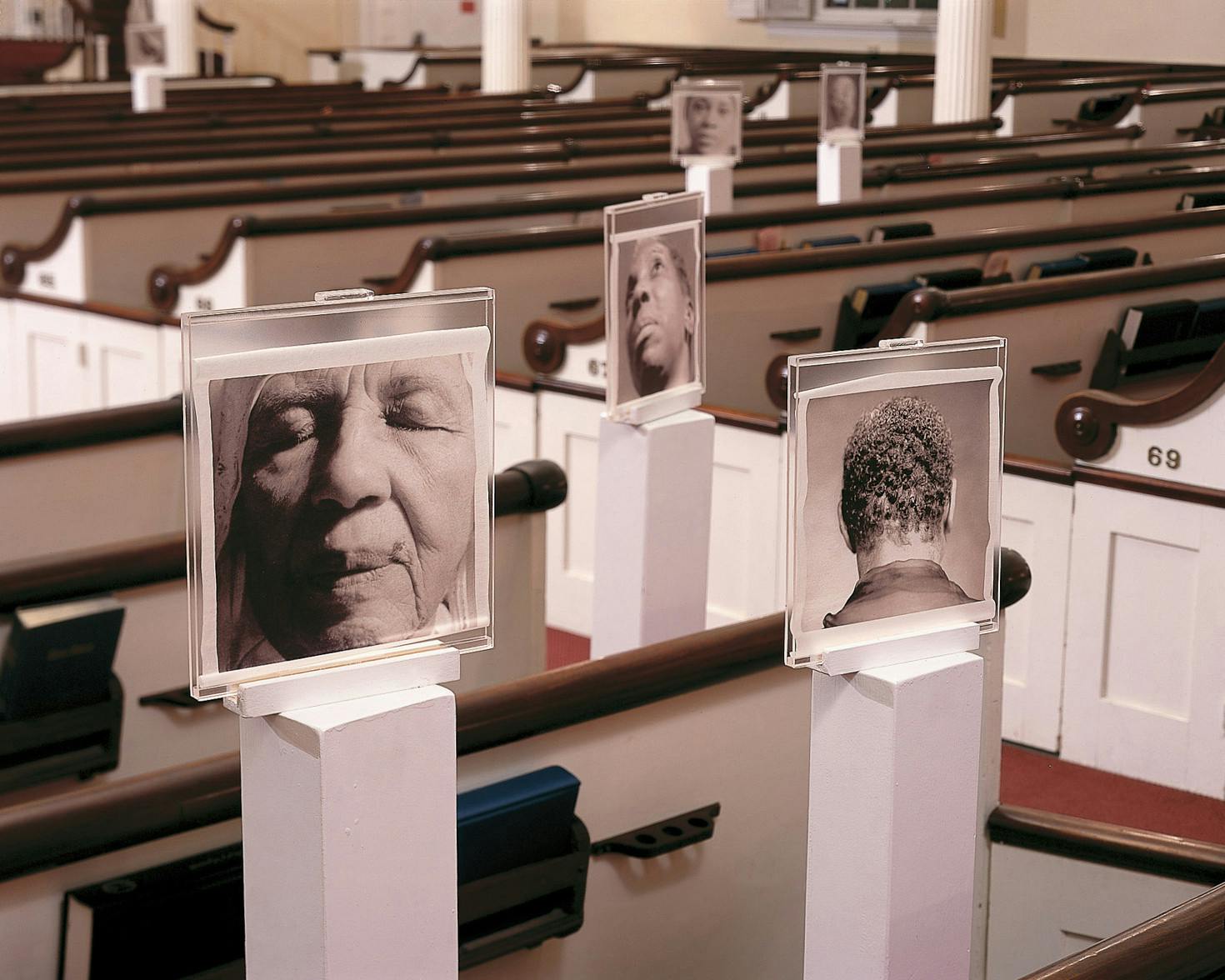
Installation view: Center Church on the Green, New Haven, CT
In the Silence project McCallum and Tarry investigate the relationship between two historically significant churches in New Haven, CT, namely, the Center on the Green and the Dixwell Avenue Church. The former was the founding church of New Haven and the latter was the first black Congregational church in America. The two sites are historically linked: the Dixwell Avenue church was founded in 1820 by black parishioners who left the Center Church because of the racial segregation of parishioners.
The installation in Center Church on the Green, New Haven, CT, had three components: contemporary photographs of African-American members of the Dixwell Avenue Church, representing their ancestors whose images were placed on pedestals and ‘seated’ in the pews of the main floor; a series of granite ‘memorial’ plaques etched with the biography of the original church members of African descent; and a reading of an address given by Reverend James Wright to the Anti-Slavery Society in 1834.
The granite plaques, which were part historical record and part appropriated text from other memorial markers in the church, served as an acknowledgement to the African members of the Center Church.
These ‘memorial plaques’ appropriated the memorials and gravestones of respected White leaders from the Center Church and repositioned them on memorials to commemorate unknown black members of the Dixwell church. The plaques were not referencing specifics about the community members but, rather, spoke of the community’s general importance through the elegant language displayed upon the existing memorials for the White leaders.
The installation at Center Church focused on the period in 1820 when the members of African decent petitioned to occupy the central pews located on the ground floor and were denied by the White church elders. After the petition’s denial, the African-American members were required to sit in the balcony, continuing the commonly held practice of segregated seating. This decision led to a number of members establishing the first black Congregationalist church in America, known today as the Dixwell Avenue Congregational Church.
On November 9, 2001, the Board of Stewards, a governing body responsible for the maintenance and use of Center Church, elected to remove portions of a public art work by McCallum and Tarry. Specifically, the series of photographs were removed from the central seating area and placed in the balcony. The artists, in a public statement, declared the actions by the Board of Stewards to remove the artwork, prompted by the private lobbying of parishioners, without notifying the Pastors, the congregation, the sponsoring arts organization or the artists, is a startling example of history repeating itself.
The action was covert and without regard or respect for the history this artwork addressed. In response, the artists shrouded the memorial plaques that remained installed in the balcony, shuttered the balcony windows, and continued to play the audio component, a reading of James Wright’s 1837 address to The Anti-Slavery Society.
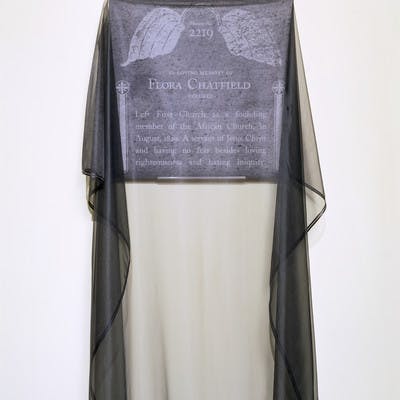
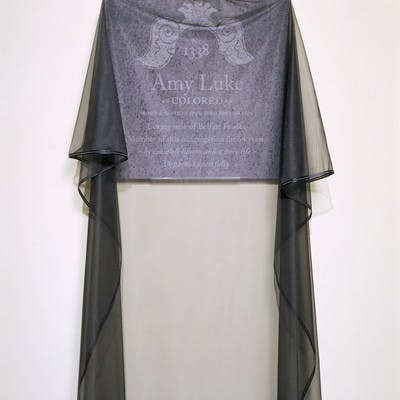
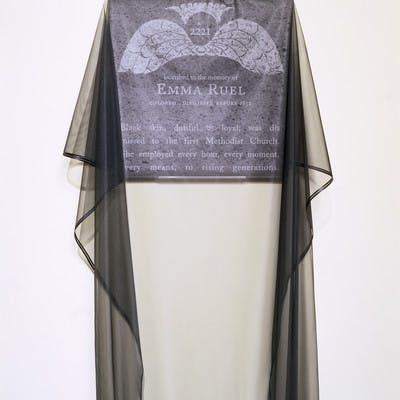
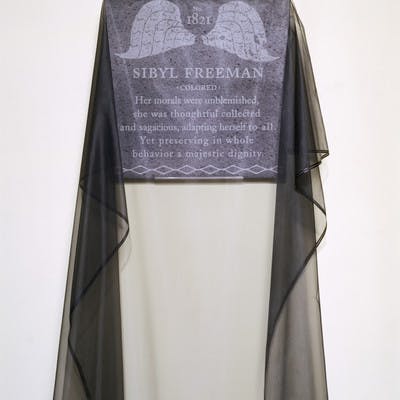
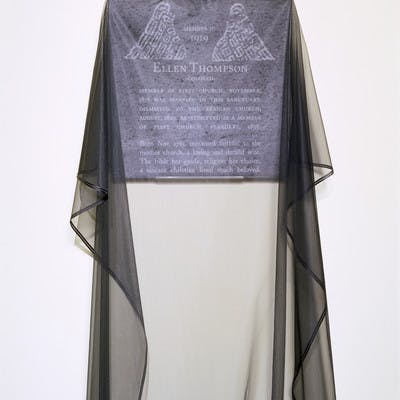
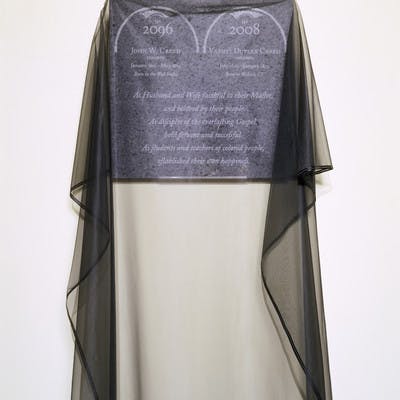
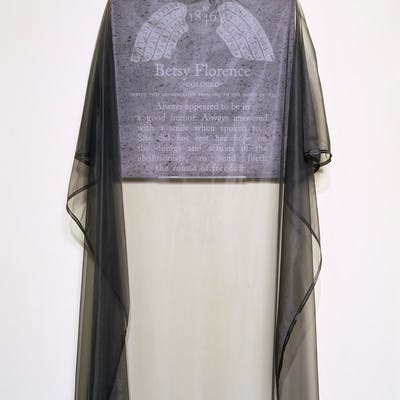
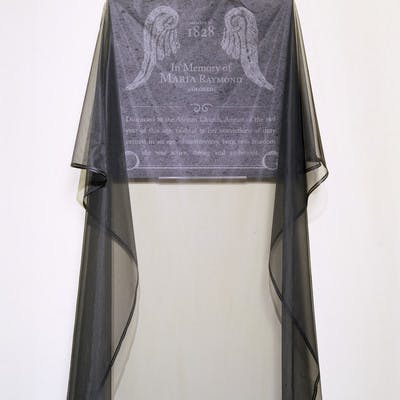


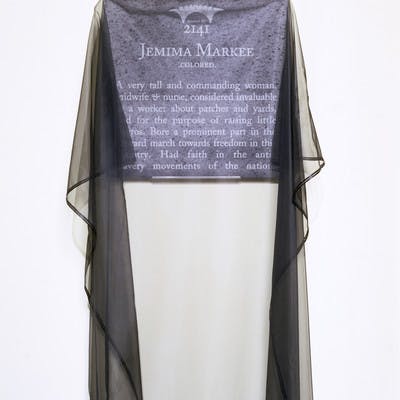
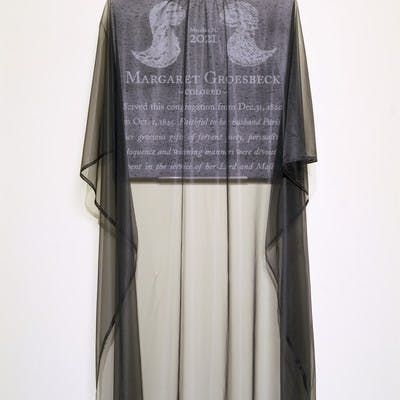
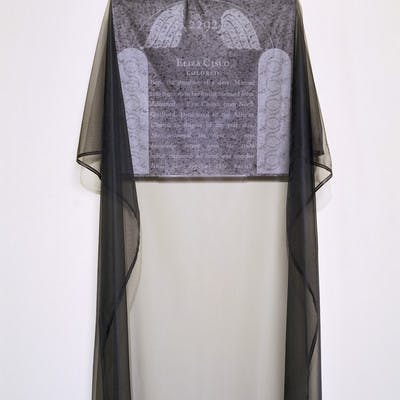

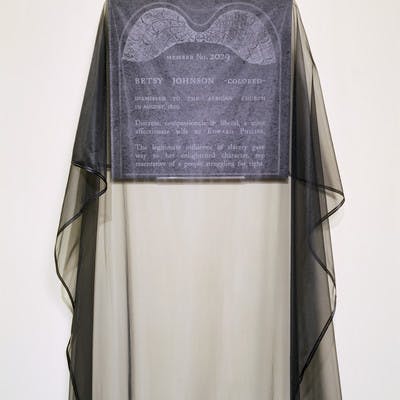
Exhibitions
Silence
Artspace at Center Church on the Green, New Haven, CT
2002
Silence
Rush Arts Gallery, New York, NY
2002
© Bradley McCallum 2026
